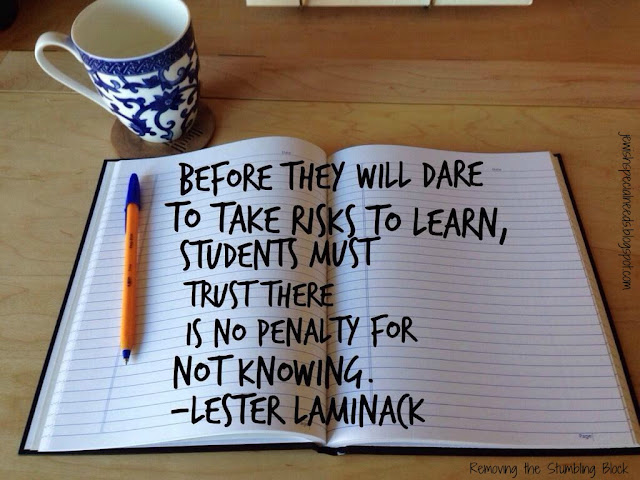How can
we build this kind of trust in our classrooms?
Rarely
use the word “wrong”
Students
need to know that you won’t press a buzzer every time they make a comment or
ask a question, no matter what. Accepting their errors and misgivings means
that you’ll get to know your students and their styles of learning. Also, you'll demonstrate the way that you will respond to questions. The
word "wrong" in a classroom is a non-starter and can inhibit further
participation. We have so many ways to say that an answer is incorrect without
using a word that leads a student to think, "I might as well not."
Don’t
just talk about trust, develop an atmosphere of trust
Talk about
yourself and your interests; become a person to your students. Take an honest
interest in their lives and demonstrate it by asking them about their
interests. Even better, remember what they are involved in and follow up after
a sports game or a special event. Have the students share the responsibility
for decorating your classroom; doing so shows that you trust their instincts,
their sense of design and their desire to contribute. Ensure that students
understand why they are doing assignments and that you are not just assigning
busywork. And wherever possible, involve them in classroom problem solving.
Demonstrate
emotional constancy
Being
emotionally constant earns students’ trust because they know you are under
control. Students will come to count on this constancy and begin to
demonstrate it themselves. Our goal is learning, not teacher-pleasing. Therefore
consider swapping phrases like, “I am disappointed in you” for, “The
expectation of this class is that you give it your best effort.”
Create
a joyful classroom
Bring
your energy, passion and humor into every learning environment. Laugh
together and share stories. Infuse art, drama, song & dance, suspense &
surprise and joy into all of your lessons. You can't directly teach joy, but you can cultivate it.
Don't miss a post from Removing the Stumbling Block:

No comments:
Post a Comment